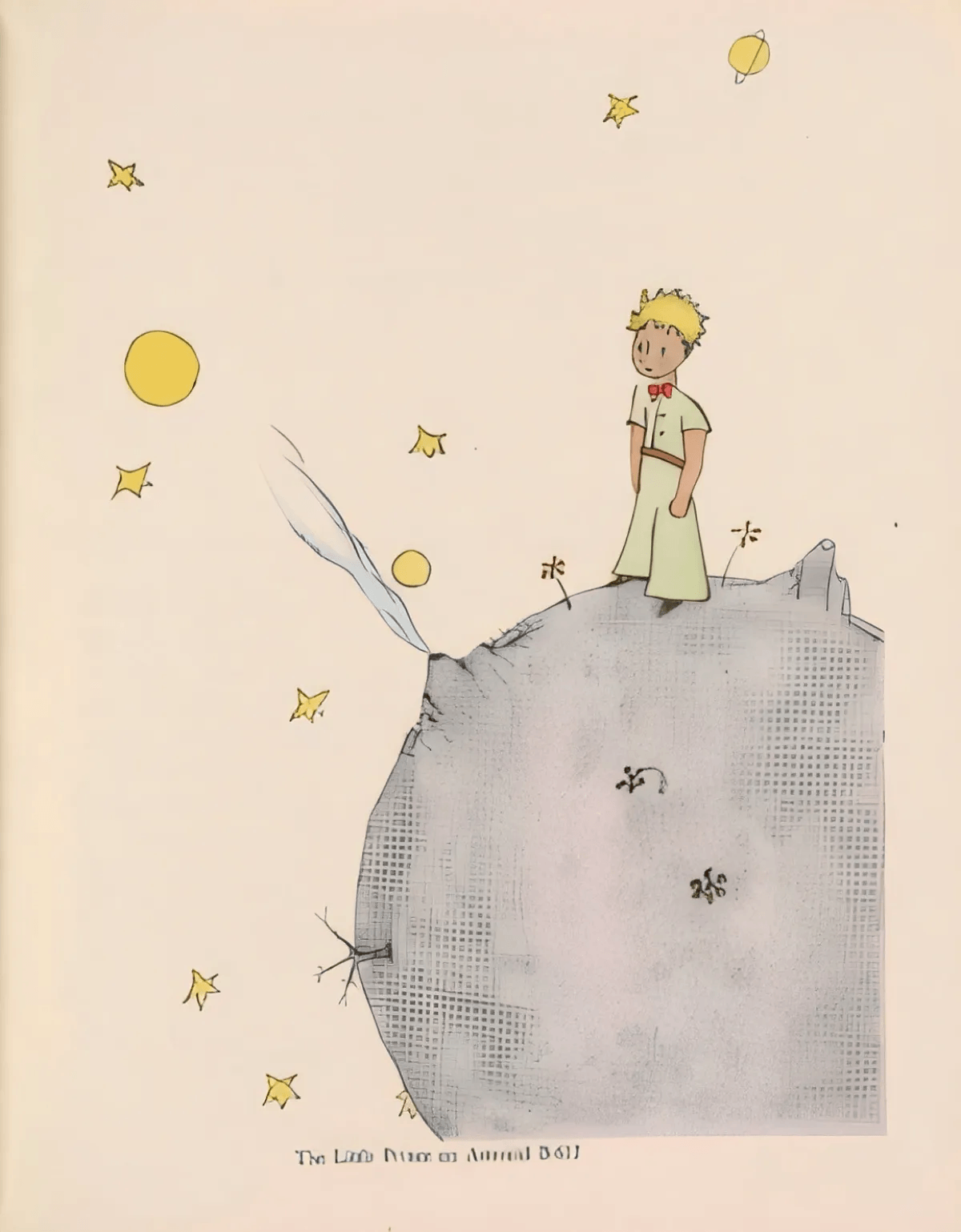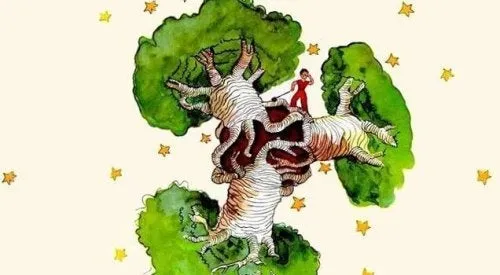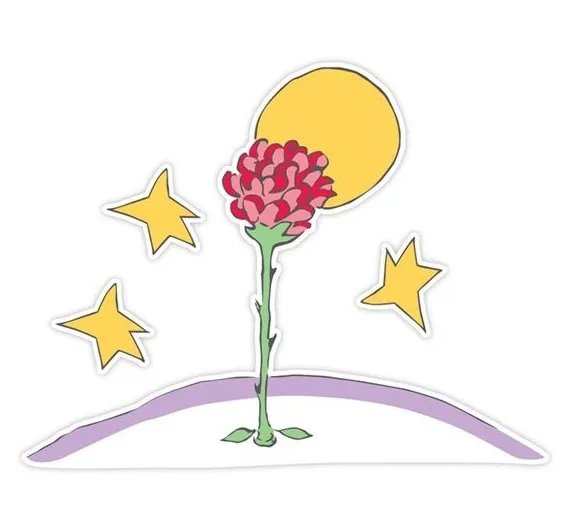Dissecting The Visual Elements In Saint-Exupery's The Little Prince
The Little Prince is a storybook that understands the vulnerability of being a child very emphatically. It is immensely loved across the world because it evokes nostalgia and poignancy that makes it a comfortable novel for all ages. Its verbiage and visual content are gracefully designed to provide succor to its readers and offer them spiritual enrichment. A writing format that is accompanied by a kaleidoscopic array of pictures not only provides a sense of integration to this experience but also makes it more attractive and engaging for the primary target audience - children.
An interesting aspect to think about from the novel is the visual content that accompanies the main story. The representation of the little prince resembles that of an adult. He is often seen wearing a scarf, or a bow tie, and his hair is scattered like a rebellious teenager. This enables the child reader to connect with the author of the novel since they feel like they are reading a work that considers them at par with adults.

Accompanying a fantastical story with visual content also helps children understand the dimensionality of ideas by seeing them represented visually. For example, the large baobab tree that is powerful enough to 'split up an entire planet' is reminiscent of the powerlessness of the individual in the face of oppressive systems that govern our socio-economic systems.

The small planet of the young boy is evocative of the small and simple world of children. The pictures of the stock characters - the businessman, the lamplighter, the king, the geographer and the others - are drawn such that they reflect the qualities and nature of who they represent. The King wears a huge gown, which covers the entirety of the small planet on which he lives. It symbolizes the pervasiveness of the power figures in a child's life. The geographer is wearing green to represent geology. He looks very aged and experienced, even though his work is irrational and insincere. From a child's perspective, the paradoxes of the adult world make them appear as unconscious cartoons dictated by concepts and rationalities out of their control. The visual caricatures contribute to heightening this absurdity.
The visual content in The Little Prince also reminds the reader that there is an element of Truth in human experience that the written word conceals. For example, the author uses his picture of the boa constrictor to 'test' the closeness of the people in his life to this unexplainable Truth. The driving force to attain closeness to this Truth appears to be empathic imagination that connects each individual to every other. In their article on 'The Humanism of Saint-Exupéry', critic L.A. Triebel comments, "Terre des Hommes states the truth of man's relation to the machine and his fundamental quality of responsibility to others (and also to himself) for his own share of the life-force." This humanist message is emphasized via the use of imagery - not only in the visual content but also in the rich metaphors present throughout the novel.
The little prince's commitment to the rose underlies the essential difference between the world of the child and that of an adult - children care about being responsible for what gives them meaning, whereas adults derive meaning from the universal 'life-force' and collective rationalities (like concepts of money, political power, and academic endeavors) without seeking to add to them. Without the element of responsibility, liberty is shallow and a recipe for social disaster. Until there are people in the world who avoid responsibility while still feeling entitled to liberty, there will be perpetual conflict.
Children will be vulnerable, sad, and confused, and their helplessness will be appropriated by adults unwilling to understand them and the sense of responsibility they inherently feel by the virtue of not being 'corrupted' by society's entitlement. "Here, then, is a great mystery. For you who also love the little prince, and for me, nothing in the universe can be the same if somewhere, we do not know where, a sheep that we never saw has - yes or no? - eaten a rose…"
This sums up the conflict created for the responsible Child, who wants to protect its rose at all costs, by the irresponsible Adult, who gives the sheep and the muzzle to the Child without a thread to hold it tight. It's a 'mystery' because one does not know when the response will be able to carry the burden of the irresponsible on its shoulders.

Opinions and Perspectives
Looking at these illustrations as an adult gives me a whole new appreciation for their deeper meanings.
The visual representation of the fox's taming process beautifully illustrates the growth of friendship.
The drawings really capture that delicate balance between innocence and wisdom that makes this book special.
I find it fascinating how the illustrations manage to be both childlike and sophisticated at the same time.
The visual simplicity of the drawings makes the complex themes more accessible to younger readers.
Studying these illustrations reminds me why this book has such universal appeal.
The way each character is visually defined by their obsessions really drives home the book's message about adults.
Never thought about how the prince's bow tie represents his maturity despite his youth. Great observation.
The contrast between the realistic elements and fantastical ones in the drawings creates an interesting tension.
I'm particularly moved by how the author draws the moments of farewell. There's such tenderness in those scenes.
The visual elements really help convey the book's central message about the importance of human connections.
Each time I look at the illustrations, I notice new details that add to the story's depth.
The way the baobab trees are drawn makes them look both beautiful and menacing. Perfect metaphor for unchecked problems.
Looking at the illustrations, I'm amazed by how much emotion they convey with such simple lines.
The visual contrast between the prince's small planet and the vast universe really emphasizes themes of loneliness.
I appreciate how the drawings maintain their childlike quality while dealing with sophisticated themes.
The recurring motif of stars throughout the illustrations creates a sense of continuity in the prince's journey.
These illustrations prove you don't need complex art to convey deep meanings.
The way adults are caricatured in the drawings really emphasizes their foolishness from a child's perspective.
Just realized how the prince's home planet gets more detailed as the story progresses, like we're getting to know him better.
The drawings really capture that feeling of childhood wonder while acknowledging its underlying sadness.
I wonder if modern children connect with these illustrations the same way we did growing up.
The visual representation of the rose's vanity through her thorns and petals is quite clever.
Never realized how the geographer's appearance contradicts his actual knowledge. Great point about adult world paradoxes.
The physical smallness of the prince contrasted with the big ideas he represents is such a powerful visual choice.
The way each planet is drawn gives us insight into the characters living on them. It's like their worlds are extensions of themselves.
I'm struck by how the author uses empty space in his illustrations. It adds to the feeling of isolation and discovery.
The illustrations help bridge cultural gaps. That's probably why the book resonates globally.
Anyone else notice how the proportions in the drawings change based on what's emotionally important in each scene?
The visual portrayal of time through the sunset scenes is particularly moving. It captures something universal about human experience.
I find myself studying each illustration more carefully after reading this analysis. There's so much to discover.
The way the author draws the earth from space shows such a profound perspective on our place in the universe.
My kids notice different details in the illustrations each time we read it. They're layered with meaning.
Something about the simplicity of the drawings makes the story more powerful. It leaves room for imagination.
The visual representation of adults as these absurd characters really captures how children view grown-ups.
I've noticed the prince's expression changes subtly throughout the book, reflecting his emotional journey.
The way space is depicted in the book always fascinated me. It feels both vast and intimate at the same time.
Looking at these illustrations reminds me why this book resonates with people of all ages. The visuals speak a universal language.
The minimal use of color makes the few colored illustrations really stand out. The rose especially becomes more significant.
I appreciate how the drawings maintain consistency throughout the book while still showing different perspectives and scales.
The visual progression from the elephant inside the boa constrictor to the hat really shows how adults lose their imagination.
The way the author draws himself in the story creates such an intimate connection with readers. It feels like he's sharing his personal journey.
Does anyone else think the businessman's planet looks intentionally cramped? It really shows how limiting materialism can be.
The illustrations of the stars make me think about connections between people. Each one seems to represent a different relationship.
I find it interesting how the prince's scarf flows in the wind. It adds a sense of movement and freedom to the character.
The way the snake is drawn in the opening chapters always gave me chills. Such a simple design yet so powerful.
Actually, I think dismissing the symbolism misses the point. The author clearly put thought into every visual element.
Not sure I agree with all these deep interpretations. Sometimes a drawing is just a drawing, isn't it?
The visual elements really help convey the book's message about seeing with the heart. Some things can't be expressed in words alone.
I remember being confused by the baobab trees as a child. Now I see them as a warning about letting problems grow too big to handle.
The sheep in the box illustration is pure genius. It shows how imagination can transcend literal representation.
You know what's fascinating? The contrast between the simple drawing style and the complex ideas it conveys.
Reading this analysis makes me want to revisit the book. I never fully appreciated how much thought went into each illustration.
The visual style reminds me of children's drawings, which makes it more approachable for young readers while still containing sophisticated themes.
I love how the fox is drawn with such personality. His expressions really bring the taming sequence to life.
The way each character's planet is drawn tells us so much about them. The lamplighter's tiny world especially shows the futility of meaningless routine.
Interesting point about the desert scenes. I always saw them as representing the vastness of possibility rather than isolation.
Has anyone noticed how the desert scenes create a sense of isolation? I think it reinforces the theme of loneliness throughout the book.
The visual portrayal of the businessman counting stars seems even more relevant today. It perfectly captures our obsession with quantifying everything.
I never thought about the geographer's green clothing symbolizing geology before reading this. The attention to detail in these illustrations is remarkable.
The rose illustrations always make me emotional. There's such tenderness in how they're drawn, especially when showing the prince's care for his special flower.
Looking back at the book now, I'm amazed at how the visual elements work on multiple levels. The simplicity speaks to children while hiding deeper meanings for adults.
The way the king's robe covers his entire planet is such a brilliant visual metaphor. It really shows how authority figures can seem all-encompassing in a child's world.
I actually disagree about the prince looking like an adult. To me, his scattered hair and small stature clearly represent childhood innocence.
What struck me most was how the author used his drawing of the boa constrictor as a test of imagination. It perfectly captures the divide between those who see with their hearts and those who don't.
The baobab tree illustration really stuck with me as a kid. Now as an adult, I understand it represents so much more about power structures in society.
I've always found the visual elements in The Little Prince fascinating. The way Saint-Exupery drew the prince with adult-like features really speaks to how the book bridges the gap between childhood and maturity.
